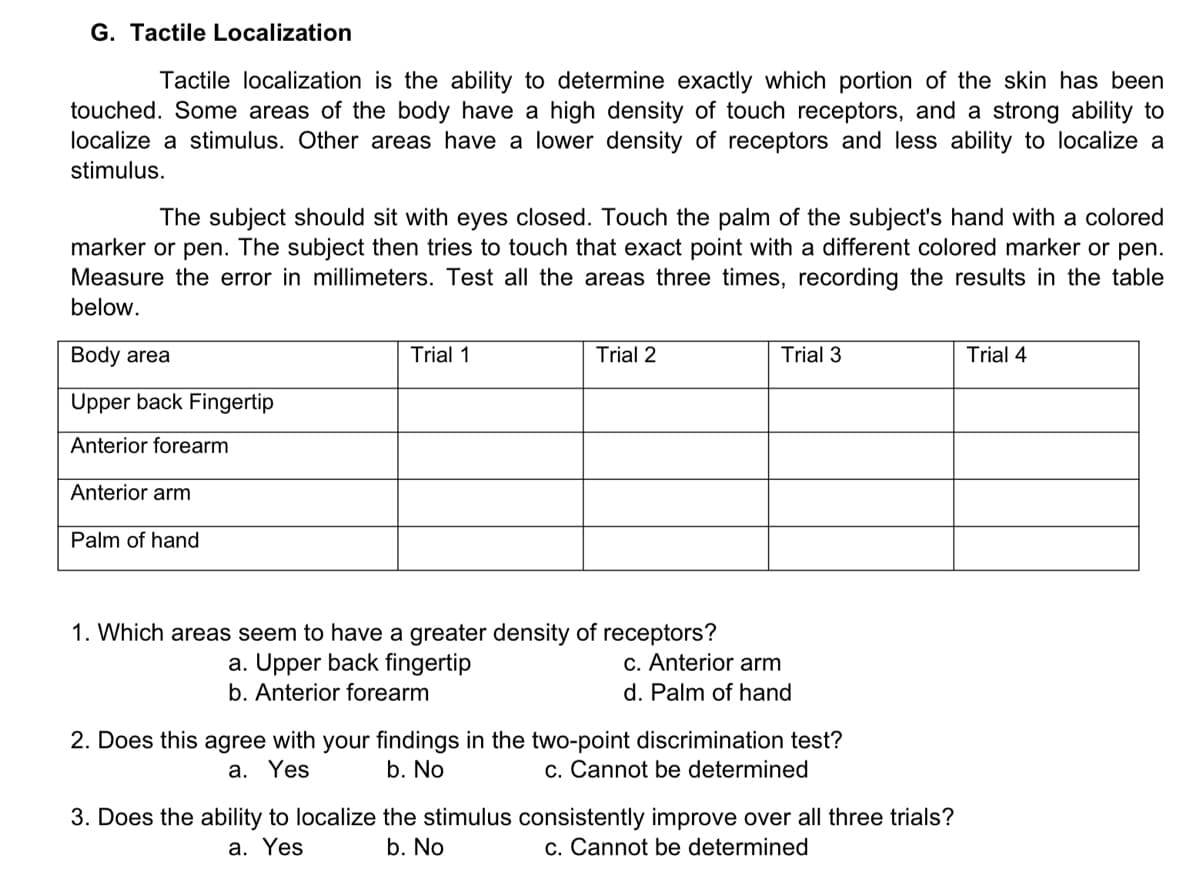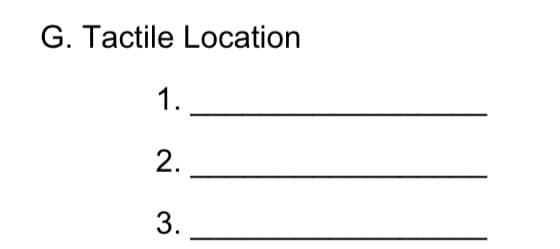Biology 2e
2nd Edition
ISBN:9781947172517
Author:Matthew Douglas, Jung Choi, Mary Ann Clark
Publisher:Matthew Douglas, Jung Choi, Mary Ann Clark
Chapter36: Sensory Systems
Section: Chapter Questions
Problem 1VCQ: Figure 36.5 Which of the following statements about mechanoreceptors is false? Pacini corpuscles are...
Related questions
Question

Transcribed Image Text:G. Tactile Localization
Tactile localization is the ability to determine exactly which portion of the skin has been
touched. Some areas of the body have a high density of touch receptors, and a strong ability to
localize a stimulus. Other areas have a lower density of receptors and less ability to localize a
stimulus.
The subject should sit with eyes closed. Touch the palm of the subject's hand with a colored
marker or pen. The subject then tries to touch that exact point with a different colored marker or pen.
Measure the error in millimeters. Test all the areas three times, recording the results in the table
below.
Body area
Trial 1
Trial 2
Trial 3
Trial 4
Upper back Fingertip
Anterior forearm
Anterior arm
Palm of hand
1. Which areas seem to have a greater density of receptors?
a. Upper back fingertip
c. Anterior arm
b. Anterior forearm
d. Palm of hand
2. Does this agree with your findings in the two-point discrimination test?
a. Yes
b. No
c. Cannot be determined
3. Does the ability to localize the stimulus consistently improve over all three trials?
a. Yes
b. No
c. Cannot be determined

Transcribed Image Text:G. Tactile Location
1.
2.
3.
Expert Solution
This question has been solved!
Explore an expertly crafted, step-by-step solution for a thorough understanding of key concepts.
Step by step
Solved in 2 steps with 1 images

Knowledge Booster
Learn more about
Need a deep-dive on the concept behind this application? Look no further. Learn more about this topic, biology and related others by exploring similar questions and additional content below.Recommended textbooks for you

Biology 2e
Biology
ISBN:
9781947172517
Author:
Matthew Douglas, Jung Choi, Mary Ann Clark
Publisher:
OpenStax

Biology: The Unity and Diversity of Life (MindTap…
Biology
ISBN:
9781305073951
Author:
Cecie Starr, Ralph Taggart, Christine Evers, Lisa Starr
Publisher:
Cengage Learning

Biology 2e
Biology
ISBN:
9781947172517
Author:
Matthew Douglas, Jung Choi, Mary Ann Clark
Publisher:
OpenStax

Biology: The Unity and Diversity of Life (MindTap…
Biology
ISBN:
9781305073951
Author:
Cecie Starr, Ralph Taggart, Christine Evers, Lisa Starr
Publisher:
Cengage Learning